All about the power of gasoline generators
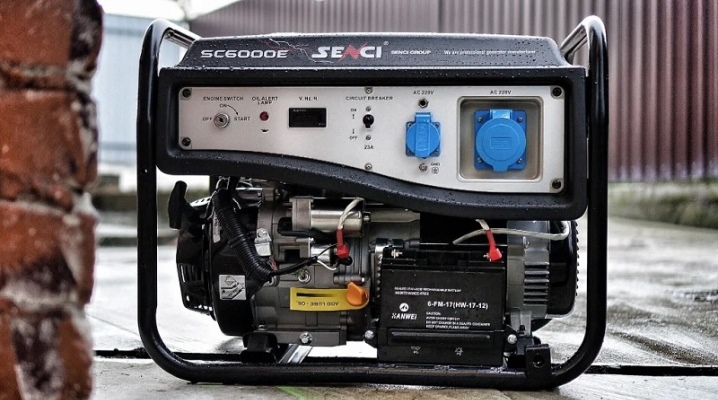
A gasoline generator can be a great investment for a household, solving the problem of intermittent blackouts once and for all. With him, you can be sure of the stable operation of such vital things as an alarm or a water pump. In this case, the unit must be selected correctly so that it is able to solve the assigned tasks, and for this, special attention should be paid to the power indicators of the device.

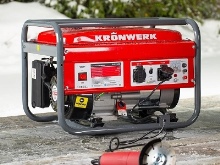
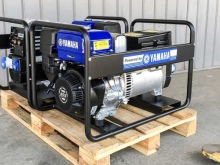
Types of generators by power
A gasoline electric generator is a generic name for autonomous power plants capable of producing energy by burning gasoline. Products of this type are produced with an eye to different categories of consumers - someone needs a modest unit for a garage, someone buys a generator for a country house, and individual consumers need an uninterrupted supply of electricity to the whole enterprise.
The most modest and cheapest models belong to the household category, that is, they solve problems within the same household. For garages, the solution to the problem can be units with a capacity of 1-2 kW, but at the same time it is necessary to take into account the desired margin of safety, and try not to load a kilowatt unit even by 950 watts out of the available 1000.

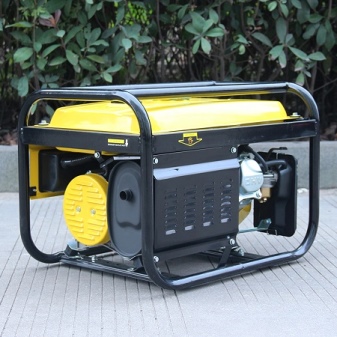
For a small country house, a generator with a rated power of 3-4 kW may be enough, but full-fledged houses, where several people live and a lot of different equipment, require at least 5-6 kW. The situation is especially aggravated by various pumps, air conditioners and refrigerators, because each of these devices at the moment of start-up itself requires several kilowatts, and if they decide to start at the same time, even 7-8 kW of power of an electric generator may be insufficient. As for large households with a house of several floors, a garage, a gazebo with connected electricity and pumps for watering a garden or vegetable garden, then even 9-10 kW is generally a minimum, or you will have to use several weaker generators.
With an indicator of 12-15 kW, the category of semi-industrial electric generators begins, which in many types of classification is not distinguished at all. The capabilities of such equipment are intermediate - on the one hand, they are already too much for most private houses, but at the same time, they seem to be insufficient for a full-fledged enterprise. On the other hand, 20-24 kW models may be relevant for a very large and technologically advanced estate or a house for several apartments, and a 25-30 kW unit, too weak for a conventional plant, may be an objective necessity for a workshop engaged in grinding and cutting. various blanks.
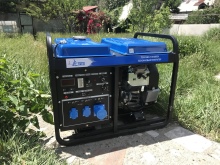

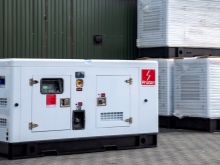
The most powerful devices are industrial generators, but it is difficult to identify the lower limit of their power. In an amicable way, it should start from at least 40-50 kW. At the same time, there are models for both 100 and even 200 kW. There is no upper limit either - it all depends on the desire of engineers and manufacturers, especially since there is no clear line between an autonomous generator and a small full-fledged power plant. In any case, if the consumer does not have enough power from a separate device, he can buy several and power his enterprise separately.
Separately, it should be clarified that power, measured in watts, should not be confused with voltage, which is often done by buyers who are not versed in the topic. Voltage only means compatibility with certain types of appliances and outlets.
A typical single-phase generator outputs 220 V, while a three-phase generator produces 380 V.
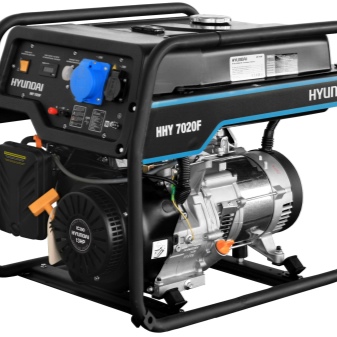
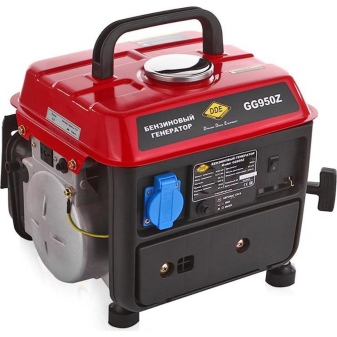
How to calculate?
The more powerful a gas generator is, the more expensive it will be, so it makes no sense for the consumer to purchase a device with a huge power reserve. At the same time, you should not chase the cheapest models, because the purchase must first of all solve the tasks set for it, completely covering the power consumption, otherwise there was no point in spending on it. Thus, When choosing an autonomous power plant, you must first understand how much of the generated current will satisfy the future owner. Each device has a power, which is indicated on the packaging and in the instructions - this is the number of watts consumed by a running unit per hour.
Wherein devices that are not equipped with an electric motor are called active, and their electricity consumption is always approximately the same. This category includes classic incandescent lamps, modern televisions and many other appliances. Equipment with electric motors, which is called reactive and can operate in different modes, should have two power indicators in the instructions.
In your calculations, you should take into account the figure that is larger, otherwise the option of overloading and emergency shutdown of the generator, which may even fail altogether, is not excluded.


You may have already guessed that in order to find the required generator power, the power of all electrical appliances in the house needs to be summed up, but there is one more detail that many citizens do not take into account in the calculations. It is called inrush currents - this is a short-term, literally for a second or two, increase in power consumption at the time of starting a device. You can find the average indicators of the inrush current coefficient for each type of equipment on the Internet, and even better if they are indicated in the instructions.
For the same incandescent lamps, the coefficient is equal to one, that is, at the time of start-up, they consume no more electricity than in the process of further operation. But a refrigerator or an air conditioner, which is already distinguished by significant gluttony, can easily have a starting current ratio of five - turn on two devices at the same time, even with all other devices turned off, and you will instantly "lay down" the generator by 4.5 kW.



Thus, to protect against the loss of an electric generator, ideally, it would be worth considering the operation of all electrical devices at the same time, and at the maximum - as if we turn them on all at one moment. However, in practice, this is almost impossible, and even then any apartment will require a generator with a capacity of 10 kW and above, which is not only unreasonable, but also expensive. Taking into account the current circumstances, the power of not all electrical appliances is summed up, but only those that are vital and must work smoothly, without looking back at any situation.
Let's take an example, which devices can be vital. If the owner is not at home, the alarm should work stably - it is difficult to disagree with this. The configured automatic irrigation in the country should be turned on in a timely manner - which means that the pumps also cannot be turned off in any case. If we are talking about winter, it will hardly be comfortable to sit indoors in a fur coat - accordingly, heating equipment is also on the list. With prolonged power outages, food in the refrigerator, especially in summer, may simply disappear, so this device is also a priority.
Each person, evaluating their home, can freely add a few more items to this list - the generator is simply obliged to cover their needs, for the life of it.



From among all the rest of the technique, one can single out the one for which it is desirable to maintain performance, and the one that will wait. A prime example of the latter category, to put an end to this right away, is the washing machine: if blackouts of several hours are typical in the area, you are unlikely to be greatly affected by having to reschedule a scheduled wash. As for the desired devices, they are responsible for the comfort of being in shutdown conditions, which can last several hours.
It is unlikely that at least one owner turns on absolutely all electrical appliances in the dwelling at the same time, therefore, it can be assumed that, in addition to the obligatory appliances, the generator will be enough for two more bulbs, a TV for entertainment and a computer for entertainment or work. At the same time, the power can be correctly redistributed by turning on the laptop instead of two bulbs, or turning off everything except the bulbs, of which there will already be 4-5.


By the same logic, you can start devices with high inrush currents if they do not imply automatic turn-on phases. - although they cannot be turned on all at the same time, you can start them one by one, turning off all optional devices and knowing that in normal operation the generator will withstand the load. As a result, adding up the power of all those devices that will be needed in the event of an unexpected power outage, we get the power required from a potential purchase.
Wherein most conscientious manufacturers honestly say that it is normal to load the generator no higher than 80%, therefore add another quarter of it to the resulting number. Such a formula will allow the generator to meet your needs, last longer, and, if necessary, take on a short-term load above the planned rate.
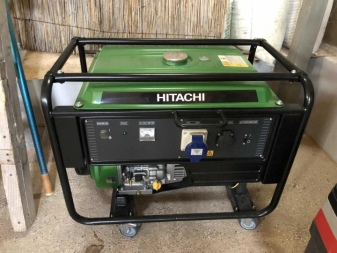

Power Plant Selection Tips
From the above, it becomes clear how to determine the required power of a gasoline electric generator for a home, but there is another important subtlety: there should be two such indicators in the instructions for the device. The rated power will be lower, but it shows the number of kilowatts that the device can deliver stably over a long period of time, without experiencing increased wear and tear. However, do not flatter yourself too much: we have already mentioned above that manufacturers separately ask not to load the generator above 80% - this concerns just the nominal indicators. Thus, when choosing such a technique, it is worth paying attention primarily to this value.
Another value is maximum power. As a rule, it is 10-15% higher than the nominal and means that this is already the limit of the unit's capabilities - it will no longer be able to produce more, and even with such a load it will not work for a long time. Roughly speaking, if, due to inrush currents, the load exceeded the rated one for a second, but still remained within the maximum and immediately returned to normal, then the electricity in the building will not go out, although the service life of the gas generator has already decreased slightly.
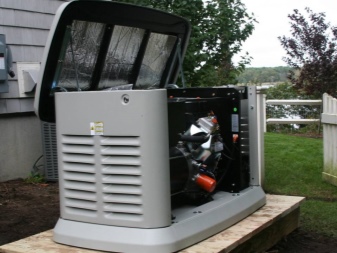

Some manufacturers in the instructions indicate only one maximum load, but then they also give a nominal coefficient. For example, the maximum for the model is 5 kW, and the power factor is 0.9, which means that the latter is 4.5 kW.
At the same time, some manufacturers from the category of unscrupulous are guided by the buyer who is ready to believe in freebies. He is offered to buy a relatively inexpensive generator with a decent power indicator, which is placed on the box in large numbers and is duplicated in the instructions. At the same time, the manufacturer does not indicate what kind of power it is, and does not give any coefficients.
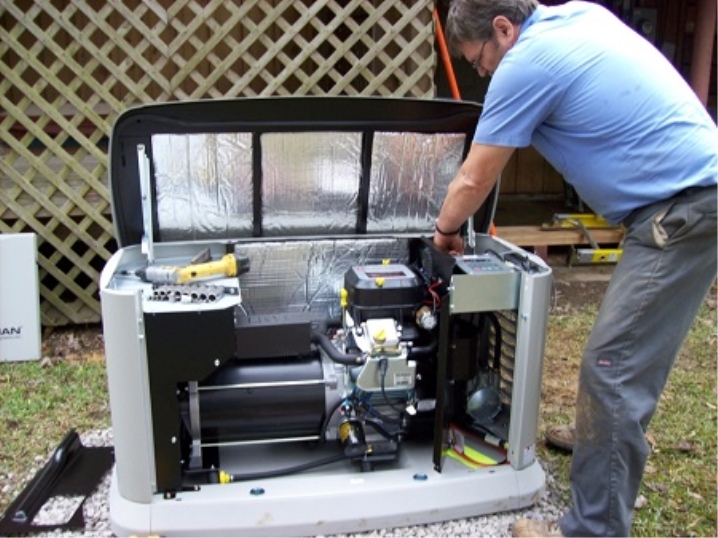
Hence, we draw a logical conclusion that we mean just the maximum power - the one that cannot be included in our calculations. At the same time, the consumer can only guess what the rated power of the device is then, and whether the supplier is cheating even more by overestimating the maximum power. Naturally, it is undesirable to purchase such equipment.
When purchasing an electric generator, try to pay attention to well-known brands that, over many years of activity, have managed to gain a reputation as a trusted and reliable partner. At the first moment, it may seem that you are in vain overpaying for equivalent power, but in practice it turns out that the device lasts longer, and it is easier to repair it in the event of a breakdown, because there are authorized service centers. However, do not forget that each manufacturer has more or less successful models, so it will not be superfluous to get information about a specific unit on the Internet in advance.
Look for consumer comments anywhere other than seller sites - the latter love to clean up the negative.
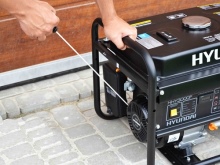


For information on how to choose a gasoline generator for your home or summer cottage, see the next video.













The comment was sent successfully.